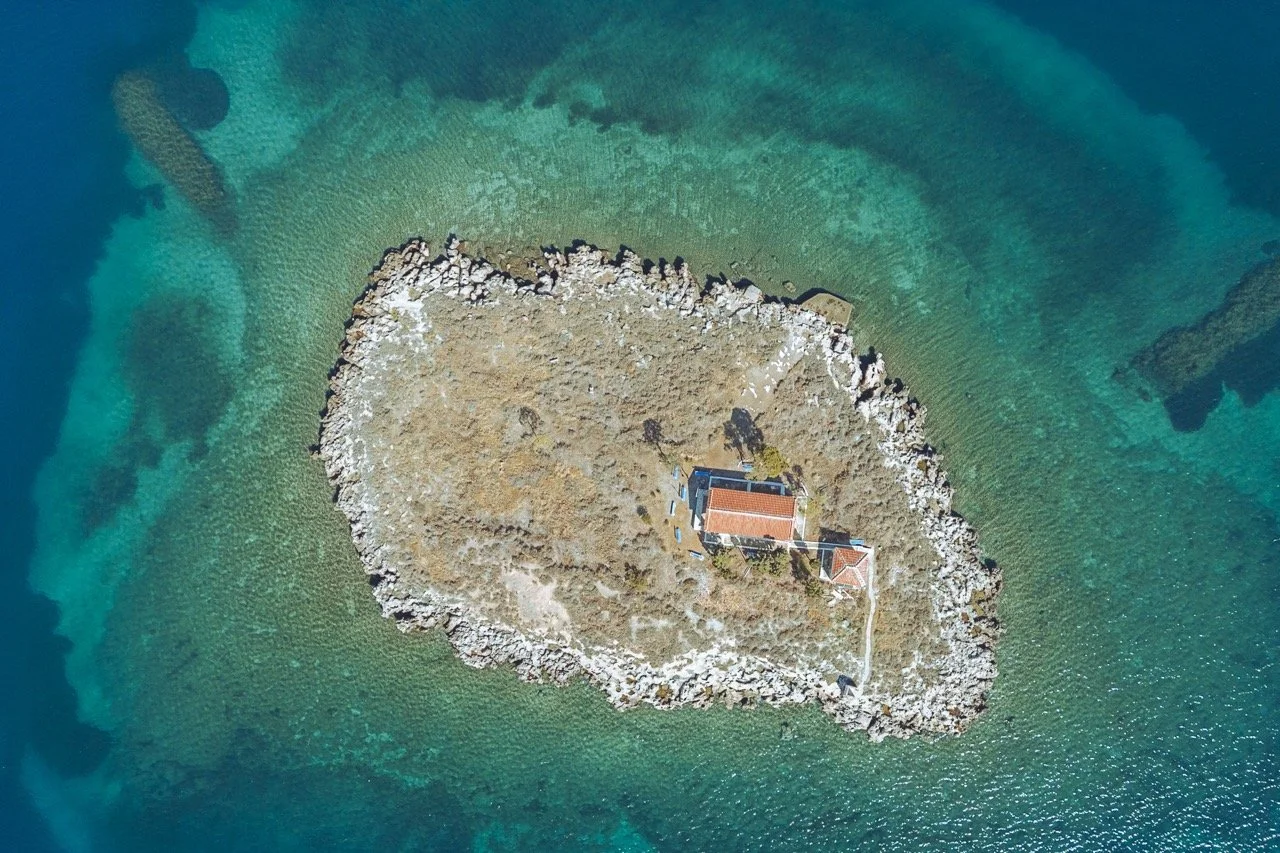Beauty around us / Klaipeda
LIVING IN A CITY OF LITHUANIA
At some point in my life, I lived for two months in a Lithuanian city called Klaipėda.
It was an interesting experience.
BITS OF KLAIPEDA’S HISTORY
Lithuania has an area of 65,300 square kilometres (almost half the size of Greece) and a population of 2,890,219 inhabitants, of whom 152,008 reside in Klaipėda, the third largest city in the country. Two of the most striking differences between Lithuania and Greece are that Lithuania has a maximum altitude of less than 295m and has only 90.6km of coastline*, with Klaipėda being its only port.
The town was founded in 1250 by German settlers and was known as Memel or Memelburg until 1945.
While the city was in Soviet hands, Klaipėda became the largest sea base in the European Soviet Union.
Today, Lithuanians are very proud of their recent history and are not particularly friendly with the Russians, while they are a brotherly people with Ukrainians.
“Linkstantis medis niekada nelūžta”
THINGS TO KEEP IN MIND WHILE TRAVELLING TO KLAIPEDA
Living here is relatively easy, for a southerner like me, with two minor exceptions:
The cold, which pierces you to the marrow of your bones. Combined with the humidity and the frequent, relentless Baltic winds, it's something that's hard to get used to, coming from the mild Mediterranean weather.
The length of the day. I lived there from mid-March to mid-May, and when I returned to Athens and got off the plane, I was stunned to see the pitch-black night sky! You see, I was sleeping around 22:00 and waking up at 05:00, so I only saw bright skies and no night at all.
The city is modern, with scattered elements of other eras clearly visible. There are young people everywhere, shops big and small, lots of cultural events, and the presence of wealth is evident, with all the expensive cars everywhere, but also the infinite number of bicycles and their corresponding bike paths, of course. Klaipėda is spotlessly clean and vibrant, with subtle elements of luxury.
It is an ideal base for getting anywhere in the country (Vilnius is a 3-hour drive away) and also to neighbouring countries, either via the port or via Palanga International Airport (where delays and flight postponements are frequent).
There are some beautiful examples of architecture, a few but worthwhile museums, a beautiful small castle, nice squares, and many cobbled streets.
LITHUANIAN GOLD LIVES HERE
Here, too, is the centre of the famous "Lithuanian gold", as amber is known. It is the most popular gift for anyone who comes here, and you will find countless shops that sell it both here and throughout the country. I personally gazed upon a chess set made entirely of amber, with a price tag of…only €11,250.
Its history begins in the nearby seaside town Juodkrantė in 1854, when work began on a navigation canal.
Baltic amber is generally considered the most expensive amber in the world, is one of the oldest found in the history of the Earth, and was formed 45 million years ago. I have been told (without knowing how much truth is behind it) that today much of the quantity is usually "fished" after storms, and it is not a rare sight to see amber hunters at dawn going up and down the beaches outside the city.
THE CURONIAN LAGOON
The Curonian Lagoon is a freshwater lagoon separated from the Baltic Sea by the Curonian Spit. It has a surface area of 1,619 square kilometres, and about half of it belongs to Lithuania, while the other half belongs to Russia, as the Kaliningrad Oblast is located to the south.
The interest here is focused almost exclusively on the Curonian Spit, which is a thin, curved ridge of sand and dunes 98 kilometres long. It has been a UNESCO World Heritage Site since 2000.
The small towns of Smiltynė, Juodkrantė, Pervalka, and Nida are located here, with the last one being the most touristic.
Also notable is the location with the poetic moniker Death Valley. In 1870–1872, a French prisoner of war camp was set up there. Numerous inmates died here as a result of illness, fatigue, and subpar prison circumstances. The name of the valley comes from the fact that they were buried directly in the camp’s cemetery.
SAFETY, LITHUANIANS AND FOOD
Before going to Lithuania by road, two were my main concerns:
The car passage of Suwalki Gap and
The high murder rate of Lithuania
For the first one, I couldn't do much, just get through it as quickly as possible; so I did.
Now, for the second one, the truth is that there was some fear in the first few days, but I quickly realized that numbers don't always tell the whole truth. The numbers are high because of domestic violence, which of course is tragic as a 21st-century fact, but there is no violence on the streets, at least not in the way I imagined before I went.
The Lithuanians I met were all friendly, spoke excellent English, and were some of the most polite and helpful people I have ever met.
Their food was also a special experience, as I was able to try all kinds of Baltic cuisine. I ate everything from the simplest food at a counter to a very expensive restaurant.
I should note here something that made a huge impression on me: every noon, 12:00-13:00, everything stops, and everyone takes their lunch break. So far, so good. The strange thing is that you can go to any restaurant or bar or wherever food is served, and people will have 2-3 meals ready, which cost very little money, and their purpose is exactly that; to feed people economically during their lunch break from work. All businesses are involved in this. I think this is amazing.
In Klaipėda, I also had the experience of eating at a unique concept restaurant, which I rank in the top 5 of the best I've ever tasted. I may, of course, have overestimated it a bit, as I was returning to my beloved Greece a few days later, but either way, excellent experience.
SIGHSEEING IN KLAIPEDA
People in Lithuania come in waves to the coastal front of the country, as I learned, in the summer months. I, used to the Greek seas, can't say I would happily dive into the Baltic waters. It looks scary and dirty, though it is not so.
Some of the nice sights in Klaipėda that I would recommend seeing and doing, preferably by renting an electric bike:
Swing (chain) bridge
"Švyturys" brewery & "BHouse" bar
Blessed Virgin Mary, Queen of Peace Church
Exposition of fishing vessels
Klaipėda pier
Clock museum
Arka - a monument to a united Lithuania
Theatre Square & The sculpture "Tarava Anike" and the monument to Simon Dach. It is said that Hitler, before one of his speeches, asked for the statue to be removed because he did not like the sight of his back.
"Piliavietė" (Klaipėda Castle)
The central building of the Old Klaipėda Post
THESE PEOPLE REALLY LOVE SCULPTURE
Something else you might be interested in about the city is that sculpture is a big part of it. Sculptures are everywhere and contrary to the usual, statues do not keep a decorative role for the squares, but rather almost the opposite. They are autonomous creations and you find them in the most unexpected places. There is even a large park full of statues. So if that's your thing, a good start would be to follow the Sculpture Route.
Two of my favorites are the “Little Kiss” and “Childhood dream” statues. At the North Cape of the Danė River, you will see a bronze girl, standing on her tiptoes. She is sending (or waiting for) a kiss to a sculpture of a boy with a puppy, standing at the cruise ship terminal, on the other side of the river. Locals say the boy is snubbing the girl, so his back is turned. He prefers to wave at the cruise ships.
The Magic Mouse is also very sweet..
One condition that made it somewhat difficult for me is that everything is online (and at speeds, compared to Greece). So, when I just wanted to buy a printer on the same day, I had an unspeakably hard time!
On the other hand, using Google Translate with the use of the mobile camera helped a lot once again.
I know that everyone prefers beautiful Vilnius when travelling in Lithuania, but really, Klaipėda is a worthy alternative, offering subtly much to the discerning traveller and without the hordes of tourists.
Give it a try!
* For reference, the Hill of Lycabettus in Athens is 277m high and Ithaca alone, the 30th largest island in Greece, has a coastline of almost 100km.
RELATED CONTENT





























































































































































